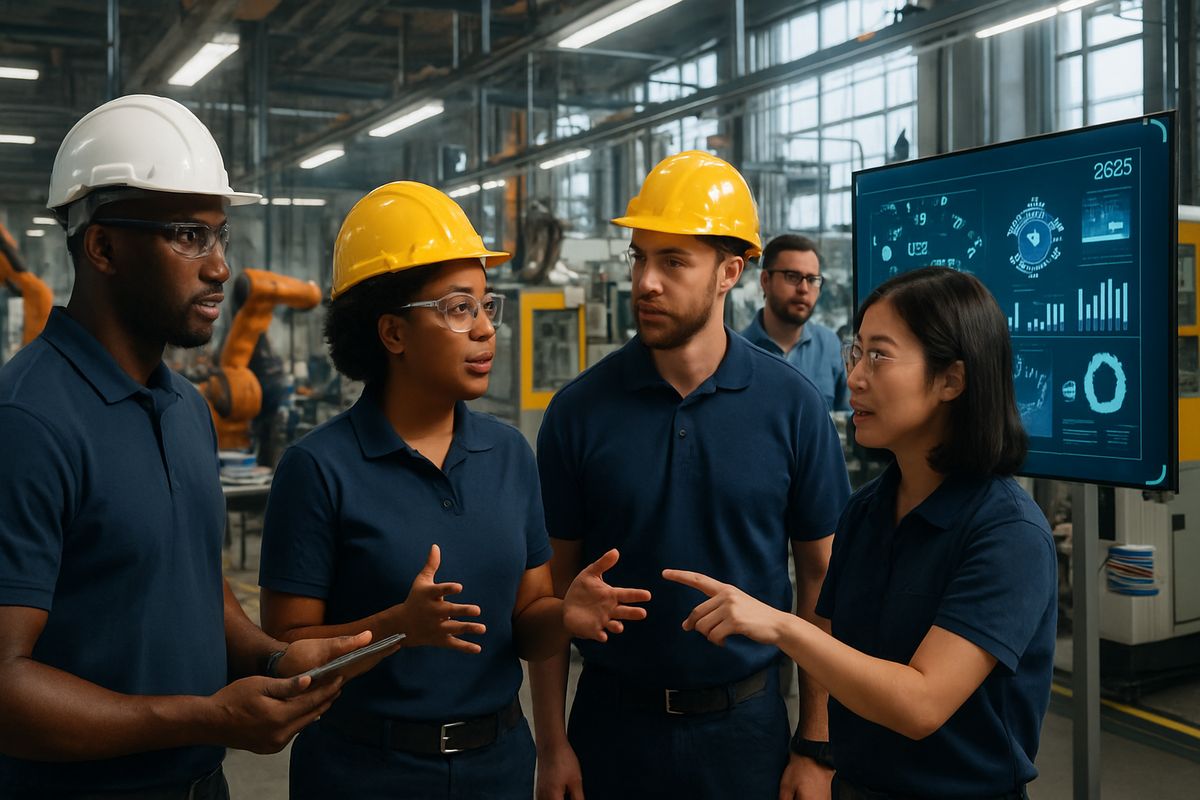The Human Factor in Predictive Maintenance: How Workforce Skills, Training, and Culture Are Powering AI-Driven Factories in 2025
In AI-driven factories, it’s not machines, but people who transform predictive maintenance from possible to powerful. Embrace the human-tech collaboration for smarter operations, where training, trust, and transparency are the keys to success.

Forget Robots—People Are the Secret Sauce in AI-Driven Manufacturing
AI, IoT sensors, and digital twins may dominate the headlines, but ask any plant manager who’s actually survived a digital transformation, and they’ll tell you: technology is only half the battle. In 2025’s most successful factories, it’s the humans—yes, the living, breathing, coffee-drinking workforce—who are quietly making predictive maintenance not just possible, but powerful.
“In an AI-driven factory, the greatest asset isn’t the machine that never sleeps. It’s the team that knows when to trust the data—and when to trust their gut.”
—Every wise plant supervisor, probably
Why Tech Alone Fails: The Human Adoption Challenge
Let’s face it: most digital transformation projects don’t trip over the tech. According to recent industry research, the graveyard of failed AI initiatives is littered with projects that underestimated the human factor. Why? Because:
- Lack of workforce buy-in—No one loves an algorithm that makes their job feel obsolete.
- Insufficient training—AI dashboards are only as smart as the people interpreting them.
- Poor change management—If you roll out predictive maintenance like a surprise fire drill, expect chaos.
Here’s the twist: The factories leading the predictive maintenance revolution in 2025 aren’t the ones with the fanciest tech. They’re the ones where people and machines collaborate like a well-oiled (and well-caffeinated) team.
Upskilling: Turning Operators into Data-Driven Problem Solvers
Modern predictive maintenance platforms generate a tidal wave of sensor data—temperature, vibration, pressure, you name it. But raw numbers mean nothing without humans trained to spot patterns, ask questions, and take action. Today’s frontline operators are morphing into:
- Data interpreters—Able to read dashboards, flag anomalies, and escalate issues before they trigger downtime.
- Collaborators with AI—Working alongside algorithms to fine-tune maintenance schedules and optimize asset health.
- Continuous learners—Earning micro-credentials and certifications in everything from IoT basics to advanced analytics.
Forward-thinking manufacturers are investing heavily in online technical training and industrial certification programs (think: Udemy for Business, Coursera for Enterprise, LinkedIn Learning). The result? A workforce that’s not just surviving the AI wave, but surfing it with style.
Culture Eats Algorithms for Breakfast
If the word "culture" makes your eyes glaze over, consider this: Data-driven decision-making isn’t a switch you flip. It’s a mindset you nurture, one conversation at a time. The best factories in 2025 are:
- Celebrating curiosity—Encouraging workers to question the data, not just accept it.
- Rewarding collaboration—Bringing together IT, operations, and HR to solve problems before they become crises.
- Normalizing failure—Treating every AI misfire as a learning opportunity, not a career-ending disaster.
“Smart factories aren’t built by coders alone. They’re built by teams who turn every screw-up into a smarter system.”
Human + AI: The Dream Team for Predictive Maintenance
Let’s bust a myth: AI isn’t replacing maintenance professionals—it’s making them more essential. Here’s how the best in the business are integrating human expertise with machine intelligence:
- Operators provide context—When a sensor flags a vibration anomaly, it’s often a seasoned technician who determines if it’s a real threat or just Tuesday morning business as usual.
- AI crunches the numbers—Machine learning models scan years of maintenance logs, spotting patterns no human could catch during a lunch break.
- Together, they make smarter calls—The result? Fewer false alarms, faster repairs, and a more resilient operation.
This partnership is only possible in environments where training, trust, and transparent communication are the norm—not the exception.
Avoiding Adoption Pitfalls: Lessons from Industry Leaders
What separates the AI-powered winners from the also-rans?
- Invest in change management—Bring in consultants who specialize in both technology and people. (Hint: those who speak fluent “shop floor” and “C-suite.”)
- Prioritize safety and inclusion—As new tech rolls out, so do new safety protocols and new opportunities for every worker to contribute.
- Measure what matters—Track not just downtime and cost savings, but also employee engagement, skill growth, and retention.
Want to see how your team stacks up? Many leading manufacturers are now partnering with HR tech firms and digital transformation experts to benchmark and improve their workforce strategies. The ROI? Smarter factories—and happier employees.
The Future: Factories That Learn as Fast as Their Machines
In the race toward truly smart factories, the winners won’t be the ones with the shiniest robots or the biggest cloud contracts. They’ll be the ones who empower every worker—from the apprentice to the plant manager—to thrive alongside AI.
After all, technology changes quickly. But a culture of curiosity, learning, and collaboration? That’s the real competitive advantage—and it’s one no algorithm can automate.
Want More Smart Insights—And a Say in the Conversation?
Subscribe for free to become a Funaix Insider and get first access to our sharpest news, expert interviews, and actionable guides. Plus, only subscribers can read and write comments—so if you want to join the smartest conversation in digital manufacturing, now’s your chance. (Did we mention it’s free—at least for now?)




